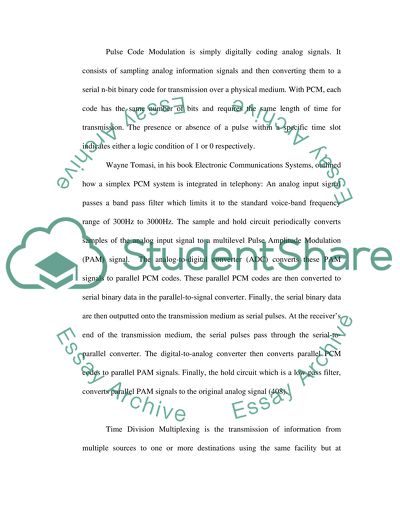Cite this document
(“Digital Telecommunications and Networks Essay Example | Topics and Well Written Essays - 2500 words”, n.d.)
Digital Telecommunications and Networks Essay Example | Topics and Well Written Essays - 2500 words. Retrieved from https://studentshare.org/miscellaneous/1524684-digital-telecommunications-and-networks
Digital Telecommunications and Networks Essay Example | Topics and Well Written Essays - 2500 words. Retrieved from https://studentshare.org/miscellaneous/1524684-digital-telecommunications-and-networks
(Digital Telecommunications and Networks Essay Example | Topics and Well Written Essays - 2500 Words)
Digital Telecommunications and Networks Essay Example | Topics and Well Written Essays - 2500 Words. https://studentshare.org/miscellaneous/1524684-digital-telecommunications-and-networks.
Digital Telecommunications and Networks Essay Example | Topics and Well Written Essays - 2500 Words. https://studentshare.org/miscellaneous/1524684-digital-telecommunications-and-networks.
“Digital Telecommunications and Networks Essay Example | Topics and Well Written Essays - 2500 Words”, n.d. https://studentshare.org/miscellaneous/1524684-digital-telecommunications-and-networks.


